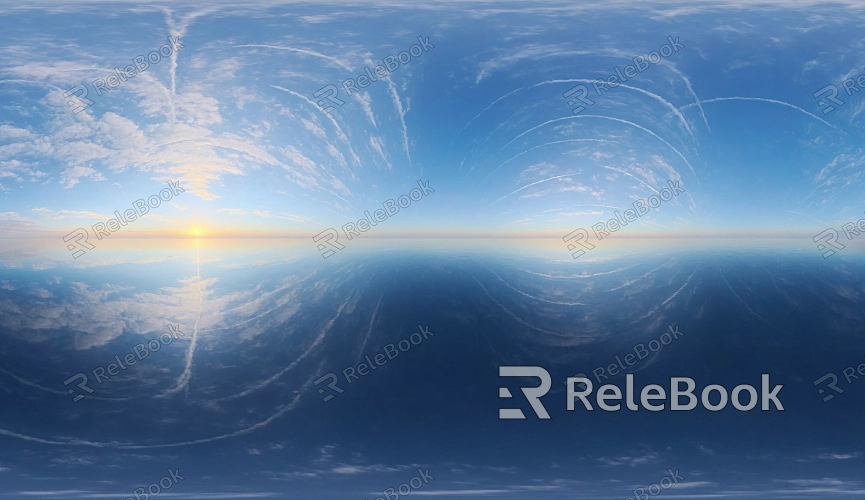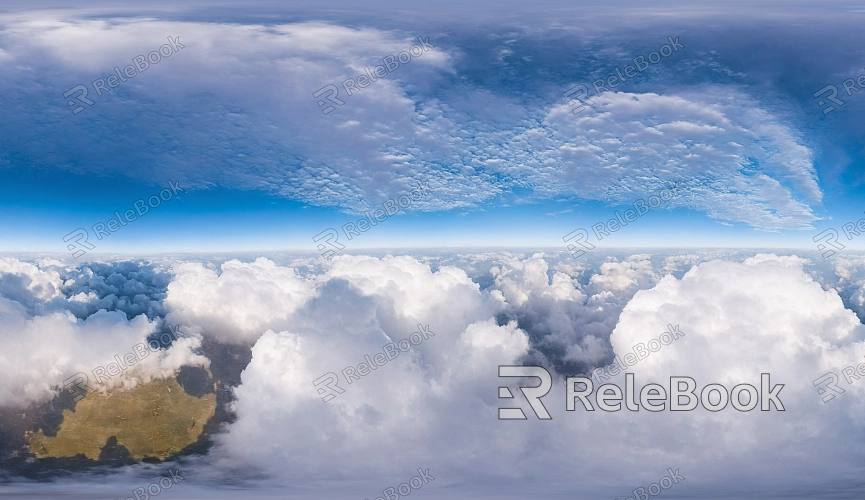Can I Create My Own Skydome HDR Texture for Architectural Visualization
With advancements in 3D rendering technology, more designers are looking to create customized HDR textures to achieve more personalized lighting effects. This is especially relevant in architectural projects where designers want to reflect specific natural environments or lighting conditions in their work. Whether using Blender, 3ds Max, Maya, or other 3D software, Skydome HDR textures can provide unique sky backgrounds and lighting effects for your scenes. This article will explore how to create your own Skydome HDR texture and explain why this skill is crucial in architectural visualization.

1. What is a Skydome HDR Texture?
To create your own HDR texture, it's important to understand what a Skydome HDR texture is. In 3D modeling and rendering, a Skydome typically refers to a spherical or hemispherical sky background that surrounds the entire scene. HDR (High Dynamic Range) textures are image formats that capture a broader range of light and color information, allowing for more realistic lighting effects. By combining these two elements, Skydome HDR textures can make your scene's lighting and sky background appear more natural and immersive.
Why Use HDR Format?
HDR images have a dynamic range far greater than standard images, capturing details in both bright and dark areas. This allows for a more accurate reproduction of sunlight and sky variations in architectural visualization.
The Role of Skydome
By using a Skydome, designers can create an all-encompassing sky environment and utilize the realistic lighting effects provided by HDR images. This is particularly crucial for outdoor architectural renders.
2. How to Capture HDR Images
Creating your own HDR textures starts with capturing multiple photos at different exposure levels. This process typically involves the following steps:
Hardware Requirements
To capture HDR images, you'll need a digital camera, ideally with manual exposure control. A tripod is essential to ensure photo alignment, especially when shooting multiple exposures.
Exposure Bracketing
HDR images are created by combining multiple photos taken at different exposures, from low exposure (to capture highlight details) to high exposure (to capture shadow details). Software like Photoshop or Photomatix can be used to merge these different exposures into a single HDR file.
Calibration and Output
Finally, use post-processing software to calibrate the image, ensuring accurate lighting and color. Export the final image in HDR formats such as .hdr or .exr.

3. Applying HDR Images to Skydome
Once you've captured and processed your HDR images, the next step is to apply them to a Skydome in your 3D software.
Setting Up the Skydome
Creating a Skydome in most 3D software (such as Blender or 3ds Max) is straightforward. You can add a sphere or hemisphere and use it as your sky background.
Applying HDR Texture
Apply the processed HDR image as a texture to the Skydome. Ensure the mapping is adjusted so that it envelops the entire sky. Most 3D software has rendering engines that support HDR formats, allowing you to directly load and use these high dynamic range images.
Adjusting Lighting
When using an HDR Skydome, the software will automatically extract lighting information from the HDR image, affecting the direction and intensity of light in the scene. You can tweak exposure and light intensity settings to fine-tune the effect, ensuring natural and realistic lighting in your architectural visualization.
4. Benefits of Custom Skydome HDR Textures
Creating custom Skydome HDR textures offers several distinct advantages for your architectural visualization projects:
Accurate Simulation of Specific Environments
By photographing the sky at a particular location and creating HDR textures, you can more accurately simulate the lighting conditions of the real-world environment. This is particularly important for rendering buildings in their actual setting.
Enhanced Render Quality
HDR textures can greatly enhance render quality, especially when dealing with highly reflective materials. They bring more depth and detail to your scenes, making the final render more vibrant and lifelike.
Greater Creative Freedom
Custom HDR textures allow designers to have greater control over the lighting and atmosphere of their scenes, rather than relying on preset environment maps. This flexibility helps create unique and distinctive architectural effects.
By creating your own Skydome HDR textures, architectural visualization designers can achieve more personalized lighting effects, enhancing the realism and expression of their projects. Mastering how to capture and apply HDR textures will not only elevate your render quality but also help you stand out in the field of architectural visualization. If you're looking for high-quality HDR image resources, 3D textures, SketchUp models, or 3ds Max models to enhance your projects, Relebook offers a wealth of options to help you achieve exceptional visual results.

